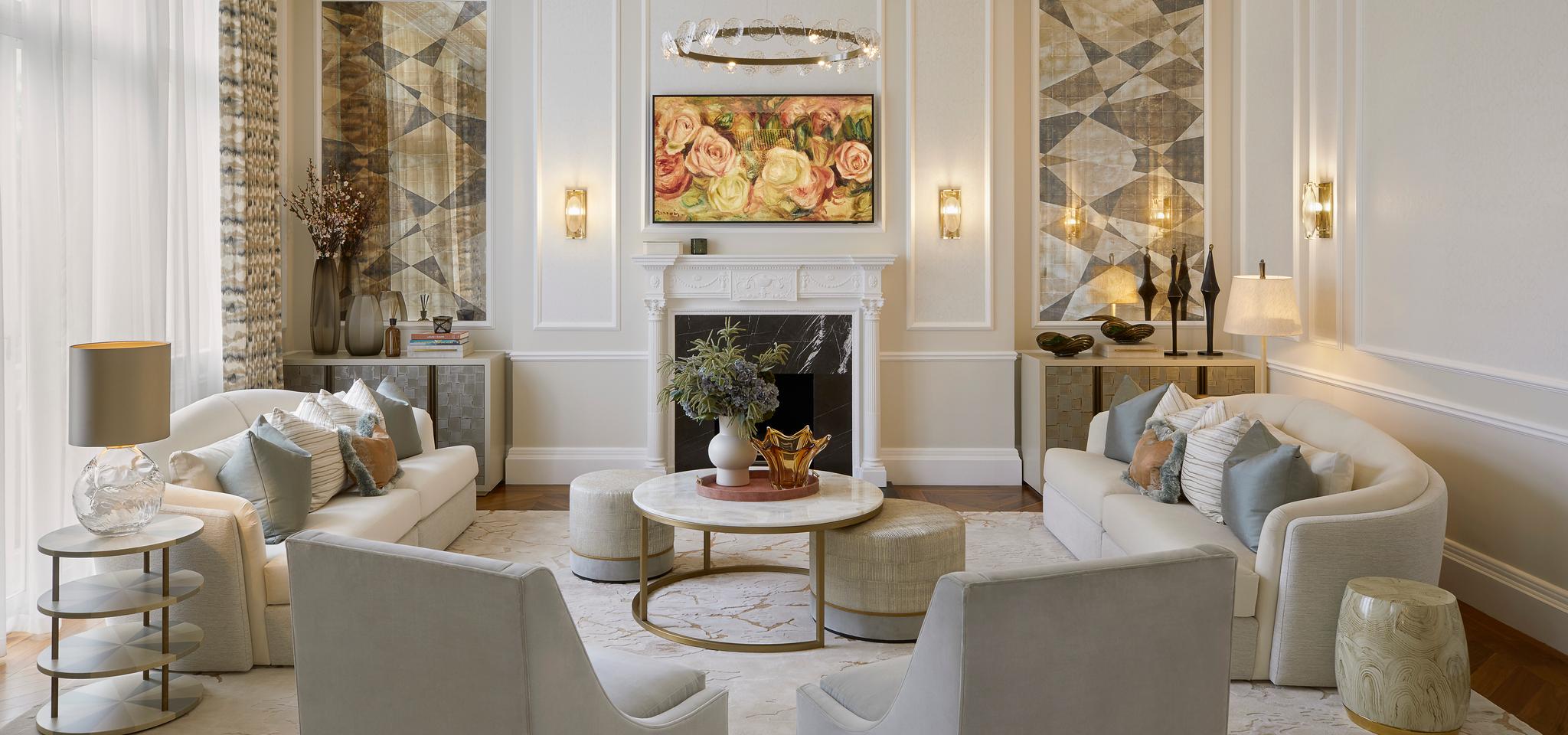
Draga & Aurel
Joy small wall lamp R34
7.465 EUR
Ships in 13-14 weeks

Meet Elliot March and James White, MAWD's founding partners, and be inspired by their modus operandi, which puts the people's experience at the center of the design process. Drawing on their rich international repertoire of experiences, MAWD | March and White Design rely on an enlightened and material-focused approach to implement new, sustainable solutions when designing a space, aiming at timeless authenticity.
Established in 2010 by Elliot March and James White, MAWD is an award-winning interior design firm with studios in London, New York, Los Angeles and Dubai. MAWD creates interiors for the world’s most celebrated brands, developers and ambitious personal projects.
The studio’s approach is built from a legacy of delivery across multiple disciplines and their global portfolio spans: exceptional residential developments, sector-defining luxury hospitality projects and branded residences to private homes, yacht and special projects for the most discerning families in the world.

Draga & Aurel
7.465 EUR
Ships in 13-14 weeks

Covi e Puccioni
9.430 EUR
Ships in 9-10 weeks

Modesign
1.830 EUR
Ships in 1-2 weeks

Giobagnara
2.375 EUR
Ships in 13-14 weeks

Officina Della Scala
13.980 EUR
Ships in 1 week

Kimano
580 EUR
Ships in 3-4 weeks

Carcino Design
1.830 EUR
Ships in 1 week

Giorgio Collection
2.160 EUR
Ships in 9-10 weeks
How did you first become involved in the world of design? Tell us your story.
Elliot March: Having earned both my B.A. and M.Arch in Architecture, I was inspired by the capacity of interiors to touch and transform the dimensions of everyday life that exist beyond architecture’s reach. After leaving Studio Daniel Libeskind and Lifschutz Davidson Sandilands architecture firm, I realized that my extensive background in architecture proved to be an asset in the world of interiors.
James White: I met Elliot back when we were both students. While our friendship lasted over twenty years, we co-founded MAWD in 2010. Since then, our studio has expanded across eleven time zones, with offices in New York, Los Angeles, Dubai and London.
How would you describe your personal style and what’s the personal signature that makes your projects unique?
Elliot March: Having lived in both Europe and America, I would describe my personal style as global, materially-driven, and boundary-pushing. Living in California for the past several years, my work has become deeply influenced by both wellness and sustainability.
James White: What makes MAWD’s projects unique is the thought we pay on the front end. Our process begins with extensive research on the project’s location, demographics, and the personas of each resident. Designing from the point of view of our audience allows us to make our residential, office, or hospitality spaces feel uniquely personal for tenants and residents.
Are there any specific trends that you’re currently blending in your practice?
While I don’t see wellness as a trend, but rather, as an essential element necessary for human prosperity, our team has recently implemented some cutting-edge wellness technologies and practices in our work.
One such example can be seen with Coterie, the first-of-its-kind, luxury later-life brand. Our team was responsible for the interior design of both Coterie New York and San Francisco, where we focused on traditional wellness spaces such as ergonomic gyms and yoga rooms, but also circadian lighting, which gradually changes hues throughout the day to help naturally regulate sleep/wake cycles.
Where do you draw inspiration for your projects?
Elliot March: I draw inspiration from places and experiences – both from travel and from living in a country and climate that is vastly different from the one I was raised in. However, most prominently, I am inspired by the natural environment. As an avid cyclist, surfer, and resident of Southern California, my daily interactions with both the landscape and sea continually inspire the ways I approach design, form, and composition.
James White: Our studio actively incorporates the latest research, trends, and technologies into our projects. In this sense, I feel that our studio has struck a balance between rich, layered, and classic interiors that appear timeless while being remarkably cutting-edge in terms of functionality and planning.
What would be your dream project to work on?
Following a two-year period of research and development, our team launched MAWDmade this year, which has been a dream project in the works, and once that we can finally talk about. MAWDmade is our studio’s first furniture collection and is composed of three distinct furniture pieces made for the design enthusiast with a conscious conscience. Drawing on clean, regenerative materials, and carbon conscious practices to translate MAWD’s vision into a timeless, luxury collection.
What do you think is going to be the next big trend in interior design?
While disciplines such as architecture have created new regulations around sustainability, we believe that the interior design industry will begin to catch up and take both sustainability and wellness into consideration. While we are already seeing client preferences for low-VOC materials and finishes, and new regulation and expect this emphasis on sustainability to grow exponentially in the upcoming years.


Helen Green Design completely transformed a 2000 square foot apartment into a stunning luxury hous…

Get to know Darlene Molnar, a Washington-based interior designer, and discover her distinctive sty…